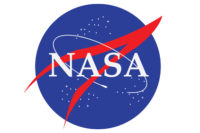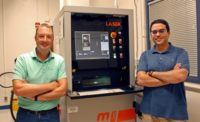A common misconception about big equipment is that it can’t be environmentally friendly. The gas turbine engine proves otherwise. It converts natural gas or other liquid fuels into mechanical energy, which is then used to drive a generator that produces electrical energy. As a result, most coal-fired power plants are being replaced by natural gas-based turbine power plants.
Jupiter, FL-based Siemens Energy Inc. manufacturers gas turbine engines for a wide range of customers worldwide. Sometimes, the turbine housings need to be cut open by Siemens field engineers so they can perform essential maintenance.
Prior to 2019, the engineers cut out the housing with a customized circular saw. This type of device was preferred over a standard flat-plated circular saw due to the housing’s complex contoured design. The problem, according to Sam Dicpetris, principle engineer at Siemens Energy, is the customized saws were not always available to engineers.
After purchasing standard circular saws, the company shipped them to job shops in the Philippines for the addition of contour-adapting plates. All saw components were then shipped back to Florida for reassembly. The process often resulted in engineers waiting more than three weeks to receive their customized hand tools.
To eliminate these delays, Siemens looked into 3D printing components for its circular saws. In 2019, company engineers began using the X7 industrial composite 3D printer from Markforged Inc. Prototype and production saw parts are made of Onyx (a nylon base with chopped carbon fiber) and reinforced with continuous carbon fiber. And engine repairs now take a matter of days instead of weeks.
“We can make a [saw-adaptor] tool that fits the exact contour of the things we’re trying to cut, which is different from anything that you can buy off the shelf,” says Dicpetris. “We can also make custom parts [that] we haven't been able to produce with traditional methods of manufacturing."
Besides saving time, the X7 printer saves Siemens money while helping it remain cutting edge, so to speak, in a competitive industry. Dicpetris estimates that the engineering team saved more than $8,000 on the first custom circular saw, as well as hundreds of thousands of dollars on other applications.
Obtaining these benefits is the main reason Siemens Energy has since purchased additional 3D printers. Engineers there now look first to using 3D-printed parts to solve problems rather than traditionally fabricated components.
“When you have a plastic part that feels and looks like a plastic part, but has this internal strength of something much different, it sets everybody up for a shock," notes Dicpetris. “The continuous carbon fiber strength [of the 3D-printed parts] is really impressive.”
More than 100 engineers at Siemens currently use the 3D printers, which have little to no downtime. Dicpetris says the engineers are constantly exploring new applications for 3D printing to improve company products and work flow.
One such project focuses on using the X7 to print modular fixtures for turbine blades. Two others involve using a Markforged Metal X system to create custom parts, and build large amounts of metal components to meet the company’s need for fast part turnaround.
For more information on 3D printers, call 866-496-1805 or visit https://markforged.com.





